Rethinking Kenyan Fish Farming: Peter’s journey towards sustainable aquaculture
In 2019, Peter Mwangi took a leap of faith into fish farming, driven by the promise of a better future where he could earn an income to feed his family and meet his other needs. With a small plot of land and unpredictable weather turning traditional farming into a gamble, Peter knew he needed a new path. Inspired by the saying "Teach a man to fish, and you feed him for a lifetime," he decided to learn how to farm fish and explore how to make it thrive.

Link to video with more information of Peter's project and progress: Affordable Aquaculture Recirculatory System Technology Facilitating Sustainable Aquaculture in Kenya
Back in 2009, the Kenyan government launched the Economic Stimulus Program (ESP), enabling thousands of farmers to build fishponds to raise tilapia and catfish, aiming to meet the growing demand for fish. Today, approximately 50,000 small-scale farmers are engaged in aquaculture, relying on simple ponds dug into the ground or lined with dam liners. Ten years later, Peter, took the plunge by setting up an 8-by-15-meter fish pond in his backyard, capable of holding 1,200 fingerlings. Despite his dedication, his first harvest was disappointing, yielding just 420 kilograms of fish. Traditional fish ponds proved to be water-intensive, susceptible to pollution, and expensive to maintain, with inconsistent productivity. Yet, for Peter, the potential was clear.

In 2023, Peter was among a handful of farmers selected to participate in a pilot project introducing the Affordable Recirculation Aquaculture System (A-RAS). The initiative is a collaboration between the Kenyan government and the Kingdom of the Netherlands. This was implemented by Wageningen University and Research, the Food Systems and Poverty Alleviation in Africa (FOSPA-Africa), Partners for Water, Aqua Farming Consult, and Laikipia University, which sought to revolutionize fish farming. A-RAS promised to address the issues that affect traditional fish farming—water wastage, pollution, and limited productivity.
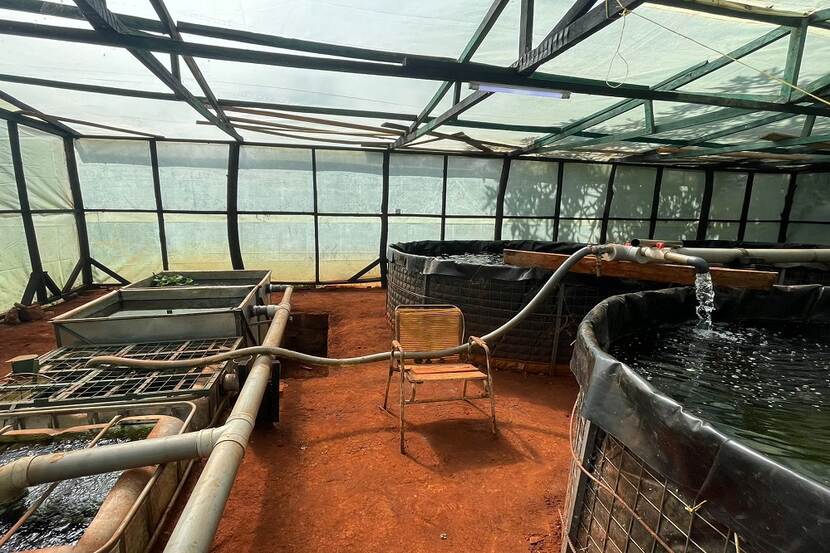
Peter embraced the opportunity. Under the guidance of experts, he transformed his fish farm, with the first order of business being to replace the traditional fishpond. In its place stood a greenhouse and breeding tanks crafted from locally available materials—timber, dam liners, and IBC tanks. He installed solar panels to power water pumps and harvested rainwater from his roof, creating a self-sufficient, eco-friendly operation.
The heart of the system lay in its ability to recycle water, reduce waste, and ensure the fish grew in a clean, controlled environment. For Peter, it was a game-changer.
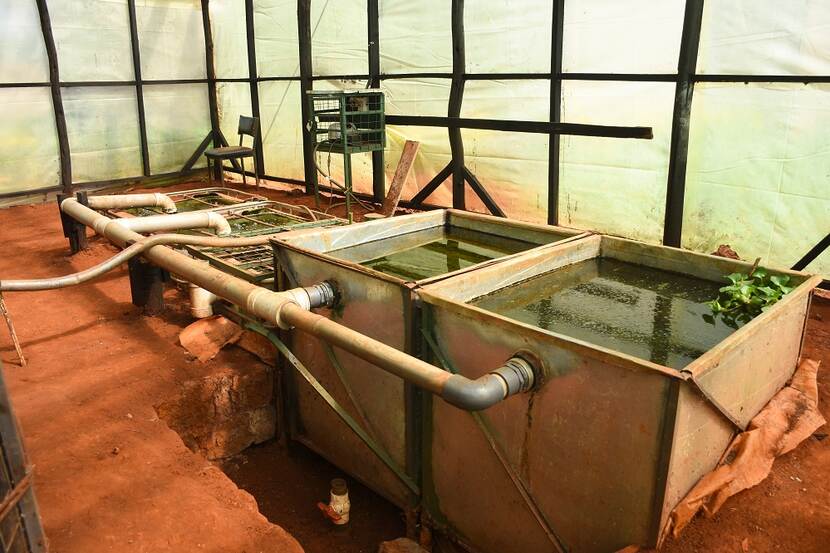
“The results were beyond my expectations. On the area we once stocked 1,200 fingerlings, it currently holds 4,500 fish. From a meager 420 Kilograms harvest, our yield skyrocketed to 1,800 kilograms of fish per harvest, more than four times what we had achieved while using the traditional fishpond” – Peter Mwangi, A-RAS fish farmer in Nyeri.
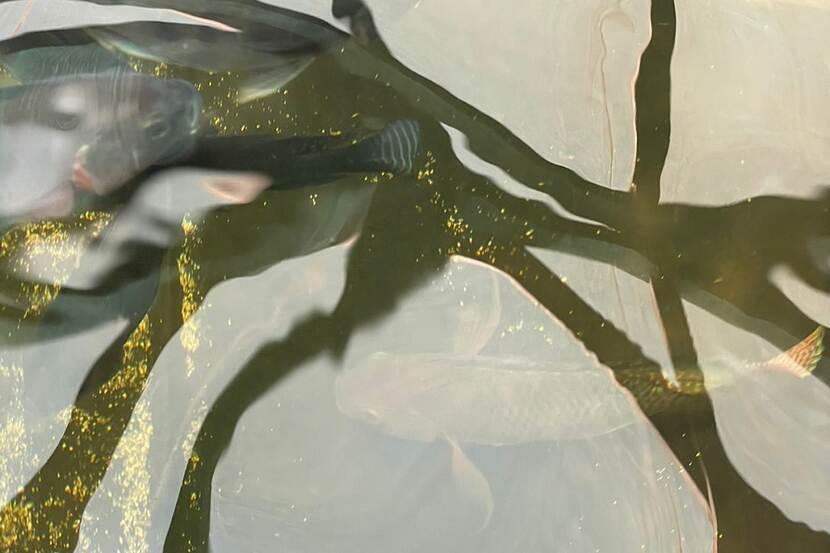
The controlled environment means that the fish mature faster and are ready for market in just four to six months instead of the usual nine months. For Peter, this meant not just more income but a chance to sell twice a year.
Though still in the pilot stage to ascertain optimal production, the A-RAS System can increase production by up to 40 times more. Recycling water and minimizing environmental impact, the system not only conserves resources but also improves fish quality. In the face of climate change, adopting A-RAS technology will be crucial in advancing key Sustainable Development Goals (SDGs). It will support water security (SDG 6) and climate action (SDG 13) through green energy, like solar panels. A-RAS also contributes to achieving Zero Hunger (SDG 2) by providing access to healthy, sustainable protein, fostering food security, and improving nutrition. Additionally, it promotes sustainable agriculture, paving the way for more resilient and productive farming systems.
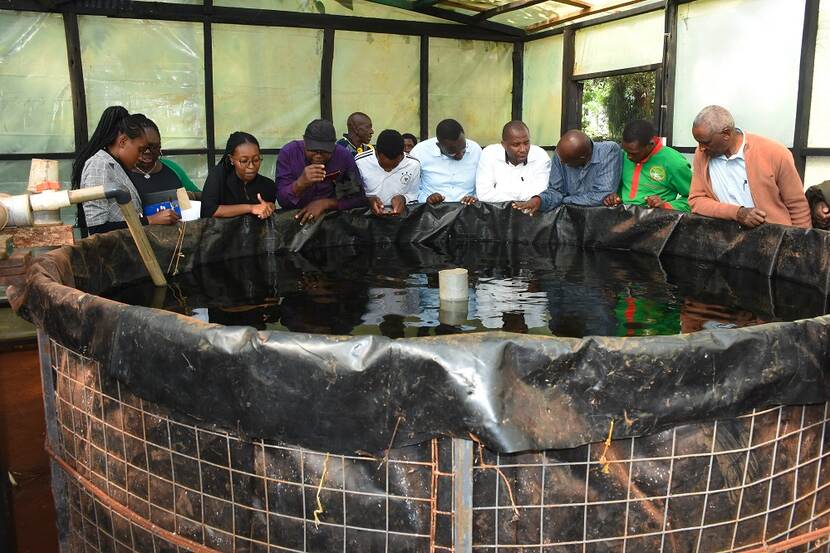
For small- to medium-scale farmers like Peter, it is a lifeline, aligning with their personal goals of productivity and contributing to their income baskets. Peter’s farm has become a symbol of what is possible when innovation meets determination. For instance, the use of water hyacinth in his system showcased how even invasive plants could be repurposed for environmental benefit. By absorbing ammonia and reducing waste, the hyacinth supports a circular, sustainable approach to fish farming.
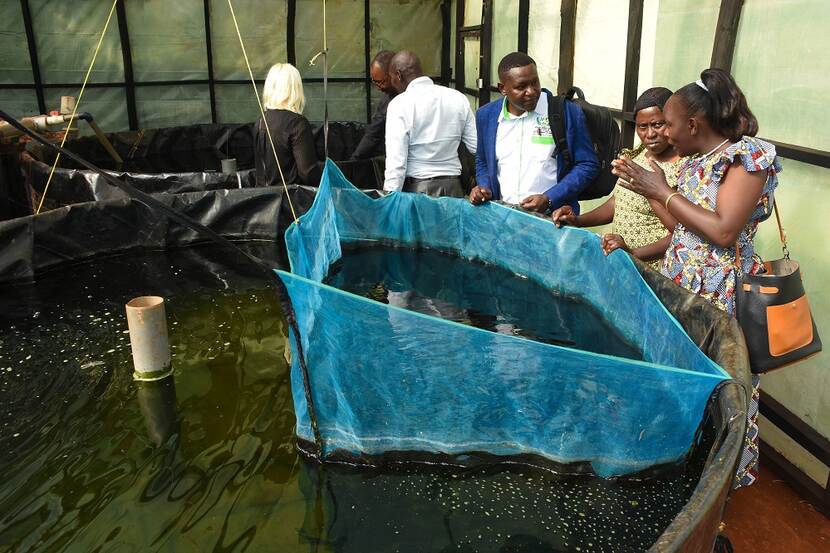
While sharing his experience during a dissemination workshop in Nyeri, he highlighted that despite the success, there were challenges he faced while making this transition. The initial setup costs were steep, but he resolved to look for locally available materials to manage these costs.
“In my case, I knew setting up a greenhouse with a steel frame would increase the setup cost, so I decided to use a wooden frame instead. This allowed me to reduce the setup cost while also lowering my investment risk as I validate the functionality of the system,” Peter adds.
Technical complexity requires specialized skills and energy demands that increase operational expenses for farmers who depend on electricity from the national grid, which keeps fluctuating and, hence, is not reliable, while initial capital outlay for green energy is relatively pricy. Maintaining water quality and managing diseases in the closed system is critical, and system failures, such as pump or filtration issues, can lead to significant losses. Limited access to financing and the high cost of quality feed further hinder adoption, while low awareness and skepticism among farmers restrict its scaling. However, the promise of higher yields and shorter payback periods made A-RAS an attractive investment.
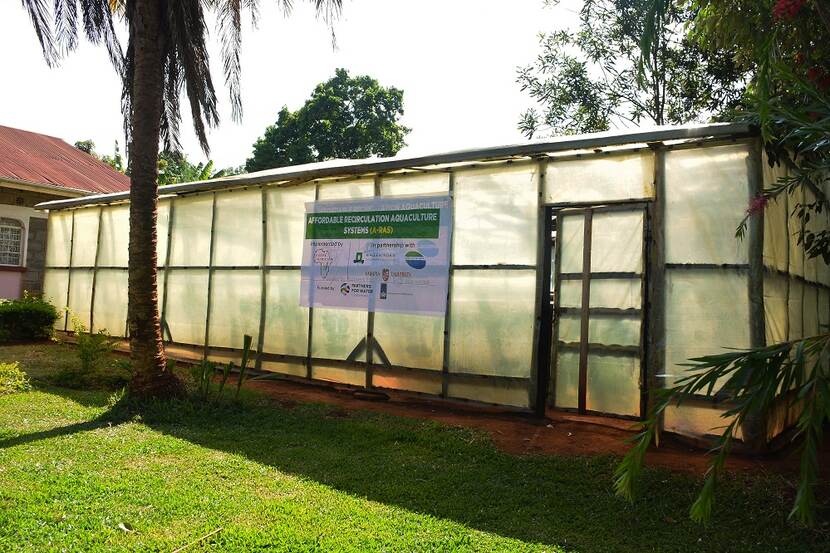
Peter’s story resonates far beyond the borders of Nyeri County. Across Kenya and Africa, small-scale farmers face similar challenges—unpredictable weather, limited resources, and a growing need for sustainable protein sources. The success of the A-RAS pilot project demonstrates that innovation could empower farmers, transforming lives and communities. By providing a replicable model, the project paves the way for scaling the technology to other regions, fostering resilience and food security.
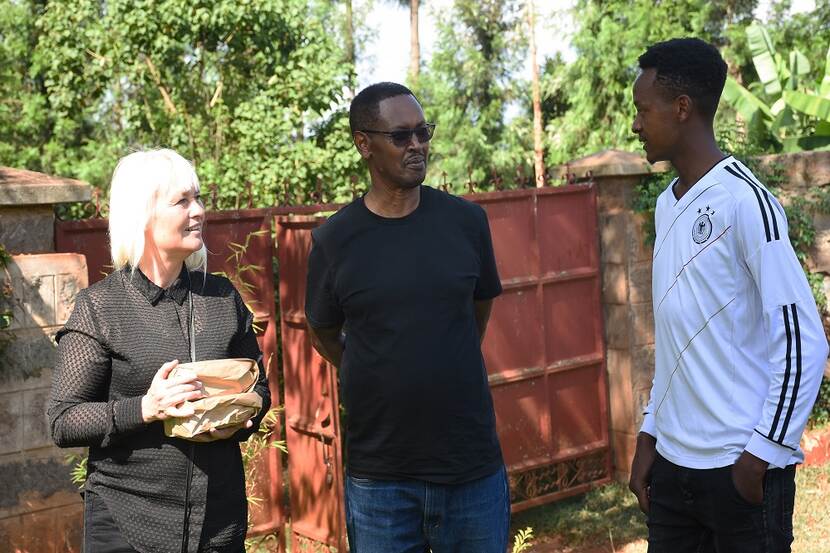
As Kenya grapples with the challenges of overfished lakes and polluted waters, aquaculture is a vital solution. Producing over 150,000 metric tons of fish annually, the nation relies heavily on its natural water bodies, which contribute 80% of this output. However, environmental pressures are threatening this delicate balance. Pollution from heavy metals and agricultural runoff endangers fish populations and water quality. Aquaculture, accounting for just 10% of the country’s fish production, holds the key to meeting the growing demand sustainably.
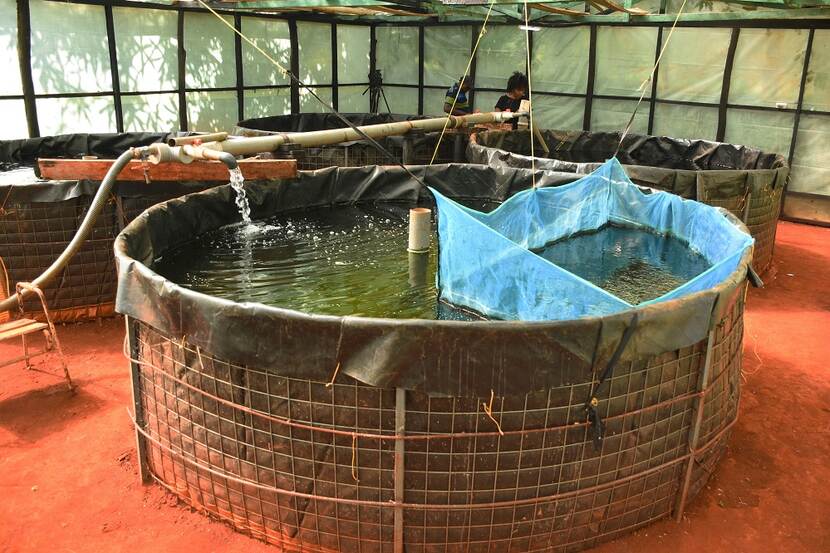
Globally, the aquaculture industry is undergoing a shift. Fish farming is the fastest-growing sector in food production, driven by the need to feed a burgeoning population. Yet, traditional methods are no longer sufficient. Technologies like A-RAS are answering that call, offering a blueprint for eco-friendly, high-yield farming practices.
Peter’s story is a reminder that innovation is not just about technology, it’s about people. It’s about farmers like Peter who dare to dream, who are willing to learn and adapt, and who, with the right support, can transform their lives and their communities.
Want To Know More?
For more information this subject or in case of questions for the Agricultural Counsellor, feel free to contact us via NAI-LVVN@minbuza.nl.
For the latest updates follow us on LinkedIn, Twitter (X) and/or register for our newsletter by sending an email to NAI-LVVN@minbuza.nl